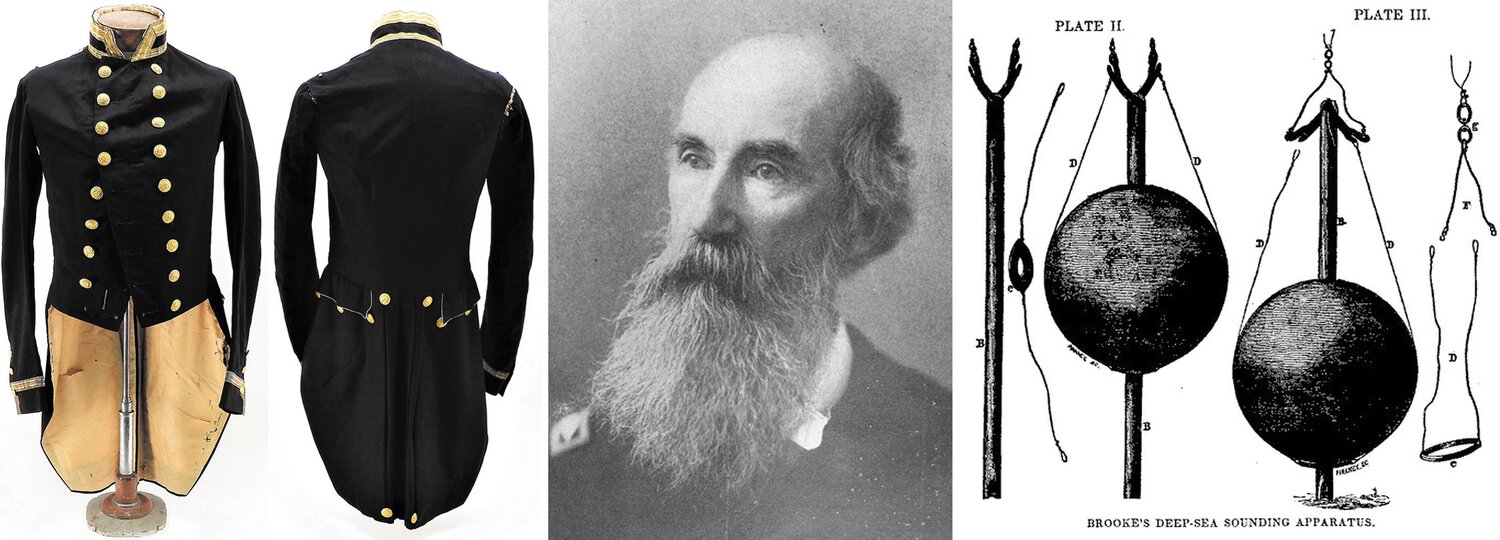Back in March we picked up a collection of uniforms deaccessioned from a museum. The uniforms had been donated over the years but didn’t meet the mission of the museum, so we brought them to the gallery to be cataloged for auction. Some of them had no provenance whatsoever, and others had the names of those who originally wore them. It’s always fun researching the original owners and sometimes there are those that you can learn a lot about. Such as the naval coatee worn by Virginian John Mercer Brooke.
Brooke was born on December 18, 1826, in Tampa, Florida. His father, General George Mercer Brooke, was an army officer, and he had other relatives in the military as well as the political field. He graduated from the United States Naval Academy in 1847 and became a lieutenant in the U.S. Navy. His first jobs as a naval officer were charting the stars as well as trying to determine the shape of the sea floor, a seemingly tough job in the 1850s. He invented a method to take soundings of the sea floor which was used for many years until modern technology took over. He also had a hand in the transatlantic cable which allowed President Buchanan to communicate with the Queen of England in 1858. In 1859-60 he participated in exploring expeditions to the North Pacific, as well as working with the Japanese navy.
The coming of the American Civil War led to many men in the service to make the decision as to where their allegiances lay. On April 20, 1861, Brooke resigned his commission in the U.S. Navy and went with Virginia, soon to be an officer in the Confederate States Navy. He worked on the conversion of the USS Merrimack into what became the CSS Virginia, as well as developing a new rifled gun named the “Brooke” rifle. Promoted numerous times during the war, he served in many important jobs as well as helping with the founding of the Confederate States Naval Academy.
With the surrender of Confederate forces in the spring of 1865, Brooke seemingly found himself in a bad position as a former Confederate officer. On June 3, 1865, he applied for a special pardon from President Andrew Johnson. In his application, he went through his service in both the U.S. and C.S. navies, and wrote he was “trusting that this application will be favorably considered by your excellency.” In his application are letters of recommendation from U.S. navy officers that he be pardoned, which he soon was. After the war, he became a professor at the Virginia Military Institute in Lexington, Virginia until he passed away on December 14, 1906.
His (1840s-50s) coatee is made from dark blue superfine broadcloth with gold metallic lace around the collar and cuffs, brass tabs on the shoulder for epaulets, Scovill back marked navy buttons, with white silk lining throughout. It’s great to handle incredible objects that tell so many historical tales. I had heard of Brooke before, but to handle and catalog his coatee was a really interesting and fun experience.















Comments
No comments on this item Please log in to comment by clicking here